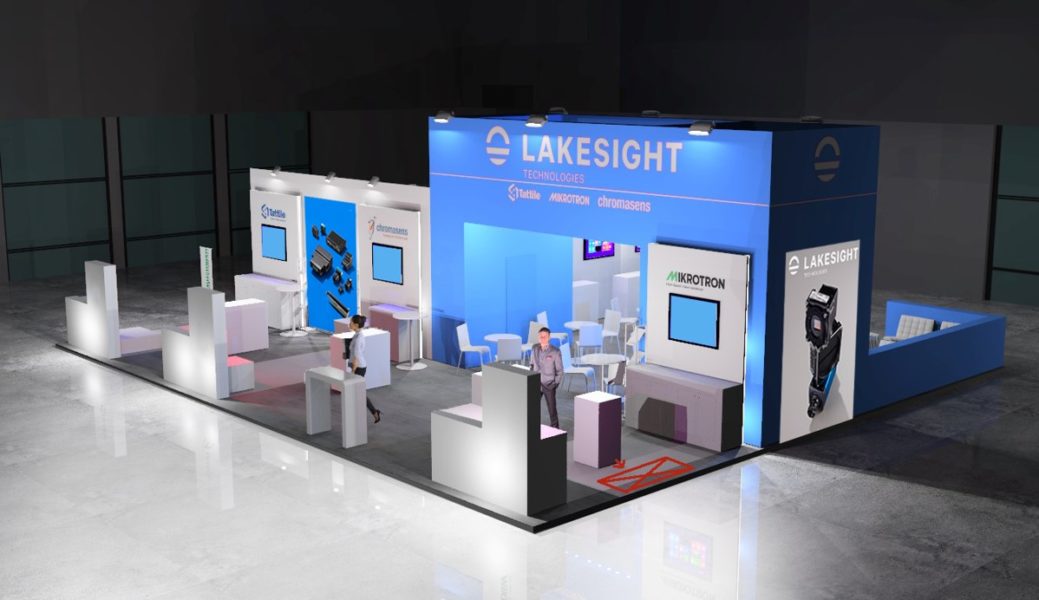Lakesight on the Vision show for the first time
Lakesight on the Vision show for the first time
Unterschleißheim, 23 october 2018
From sensor to solution – the full-service provider of smart machine vision solutions with its own products and development teams presents its portfolio
In industrial image processing, users are faced with a variety of specialized component manufacturers, distributors, system integrators and system builders. Therefore, a variety of partners are usually required to develop appropriate solutions. Customers who want to benefit from the enormous possibilities of modern image processing technologies must all too often invest a lot of time, expertise, coordination, and money.
With the breadth of in-house products, systems, technology expertise and in-house development teams, Lakesight is the first vendor in the market to serve its customers at all levels, from the design-in of any image sensor to developing sophisticated, all-in-one artificial intelligence solutions. This is made possible by the merger of Tattile, Mikrotron and Chromasens to form the Lakesight group. Therefore, both, small device manufacturers, as well as system integrators, system builders, and major international companies have a financially strong and reliable partner with Lakesight, who understands them and can offer appropriate, technically innovative solutions.
At booth 1C61 of the world’s leading trade show Vision, November 6-8 in Stuttgart, the Lakesight subsidiaries will present their innovative strength with numerous new products in the fields of cameras, embedded vision, lighting and vision PCs.
The specialist for line scan camera technology, Chromasens in Constance, presents the allPIXA evo, the first line scan camera with Dual-10GigE interface. Depending on the model, it delivers 10k or 15k horizontal resolution at 4 lines and is available in a color or monochrome version. With a line frequency of up to 146 kHz, it enables extremely high web speeds and blends seamlessly into the infrastructure of production facilities thanks to the SFP + interface for 10GigE copper or fiber optic cables.
The new chromaPIXA line scan camera features and integrated module for color conversion into standardized color spaces such as sRGB or CIELAB in real-time making it ideal for print inspection. For reliable color calibration the software package chromaCalc is included.
The 3DPIXA compact C01-010 is the first stereo camera by Chromasens with a CMOS color sensor, offering an optical resolution of 10 µm, a sample width of 56 mm and a depth resolution of 3.2 µm. Thus, all advantages of the CMOS sensor technology are also available for stereo imaging now.
For particularly fast web speeds and short exposure times, high-performance cameras require extremely bright lighting. This is what the Corona series is known for in the market. At Vision, Chromasens will show coaxial modules for the Corona series for bright and dark field illumination, as well as two new LED wavelengths in the UV range.
The experts for high-speed cameras from Mikrotron in Unterschleißheim will present four new cameras at Vision. Based on the new and faster CoaXPress V2.0 interface, the EoSens 1.1CXP2 delivers up to 3,600 fps at a 1.1-megapixel resolution. The almost 30 Gbit/s are reliably transmitted over 4 channels with 12 Gbit/s each. Compatibility with some new frame grabbers for CoaXPress 2.0 is already verified. To support customers and applications that previously worked with CoaXPress V1.1, this camera is also available as CoaXPress V1.1 version, EoSens 1.1CXP, with reduced performance accordingly. As an extension to the already available CoaXPress variants, two additional cameras, the EoSens 3FIBER and EoSens 4FIBER provide 3- and 4-megapixel resolution and were equipped with a new fiber optical interface, which allows fast transmission over up to 300 m and offer a cost-effective solution for applications with high interference potential or longer transmission distances.
In the Slow Motion area, the portfolio has been expanded to include a portable and immediately operational long-term recorder LTR1,3CL for high-speed video recording at 1.3 megapixels, 506 fps and up to 140 min. extended recording time. It is ideally suited for locating and analyzing quality problems in manufacturing, as well as in research and product development.
Tattile, the Italian specialist for Embedded Vision Systems, introduces two highlights for applications which benefit from the low power consumption and processing speed of FPGAs and their seamless integration with powerful CPU architectures. The S12MP Smart Camera features a 12-megapixel CMOS Global Shutter sensor from CMOSIS and an FPGA with 125k Logic Elements where 80% are free for application specific algorithms. This architecture allows to acquire and process images at 300 fps at full resolution with low latency. Moreover, the FPGA can be programmed via VHDL and the user may implement its proprietary algorithms directly on the FPGA to decrease the load of the CPU. The Linux OS and a dual-core ARM Cortex A9 CPU enable on-camera processing with common third-party software libraries.
The M180 is the successor of the popular M100 GigE Vision Controller based on an Intel core i7 6th generation CPU and Windows Embedded. Six independent GigE ports with PoE allow for multiple cameras connections with maximized performance while the real-time I/Os and encoder input are directly linked to the internal FPGA. This FPGA-enhanced embedded Vision PC also provides two video output ports and an PCIe expansion slot.
A demo with pharmaceutical vials at the booth displays the performance of Tattile’s cameras, processing hardware, and its Nautilus software framework and library for leading-edge image analysis.
The Lakesight-team of application experts is looking forward to giving hands-on advice to system developers and machine vision users regarding their machine vision applications and technical as well as commercial requirements (booth 1C61).

